Japanese sports cars of the 1990s now have an entire generation of enthusiasts. The cars have changed over the years, but their feeling always has been the same. Each generation has automobiles it dreams of buying, and Japanese sports cars will be in big demand in the collectible car market. But the one thing different about this group is what they dream of doing with their cars. They want to fit high-end tuning gear, turbo upgrades, rare body parts, and oversize wheels. They started the tuning movement in the 1990s. One of them, Jim Pan, started modifying Japanese cars back in 1991. In the following years, Jim moved towards European cars. He founded a club called TWCompetition involved in racing rebuilds of BMW M3s, AMG-Mercedes, and a twin turbocharged Ferrari 360.
Pan Meets Miura
In 2009, Jim sponsored started a series of car shows, the Tuner Galleria, which led him to more contacts within the automotive aftermarket. He met Kei Miura when the Rocket Bunny Scion FR-S kit came on the market in 2012 and a year later visited Miura-san’s shop in Kyoto and discussed a collaboration. He invited Miura to the March 2014 Tuner Galleria Chicago event, where he saw and fell in love with the Rocket Bunny Mazda RX-7 kit for the FD3S (third-generation Japanese Market).
Their Collaboration
Not only had he fallen in love with TRA Kyoto’s latest racing design, in May 2014 Jim bought a 1993 RX-7 R1 after discussing with Miura a rebuild for the 2014 Specialty Equipment Market Association (SEMA) Show. Rather than just build an FD Mazda RX-7 with Rocket Bunny parts, he wanted to embrace Miura’s TRA Kyoto style fully with a cohesive theme.
The Transformation
After the Rocket Bunny kit arrived from Japan, the FD underwent its wide-body transformation fitted with the complete kit, a Rocket Bunny rear diffuser, and light-emitting diode turn signals. With the bodywork complete, a coat of red pearl paint contrasted nicely with gold vinyl lettering to accent the finer details of Miura-san’s design. Stance Suspension USA fitted the car with a prototype monotube coilover setup with external reservoirs and an air cup kit. With the coilover package, a chassis upgrade with Whiteline bushings and additional braces mounted both beneath the car and inside the cabin added some stiffness to the 20+ year-old FD3S.
Work In Progress
New 6666 Mesh wheels and Nitto road course tires embraced the Rocket Bunny theme further. StopTech Trophy brakes front and rear barely clear the 17-inch wheels by less than a millimeter between caliper and inner wheel. A new Mazda racing radiator is an important performance upgrade. Inside, the Rocket Bunny Mazda RX-7 cabin is subtly comfortable and friendly. Original Mazda parts have replaced plastics, and carbon-fiber bucket seats with four-point harnesses keep car occupants secure.
Rocket Bunny Mazda RX-7 Future Plans

Jim continues to work with Stance on suspension parts, hints at a future engine power upgrade, and already has made plans with Miura-san for another Rocket Bunny build for the 2015 SEMA Show. Cutting up factory bodywork and fitting aftermarket parts might not be traditional dream car modifications, but the urge to customize defines an entire group of Japanese performance car enthusiasts who see a dream car as something to modify to individual taste rather than just buy and drive. An interesting question is whether tastefully modified Rocket Bunny Mazda RX-7s with Mazda racing radiators will sell for as much as will their mint, original counterparts at the 2040 Barrett-Jackson auction.

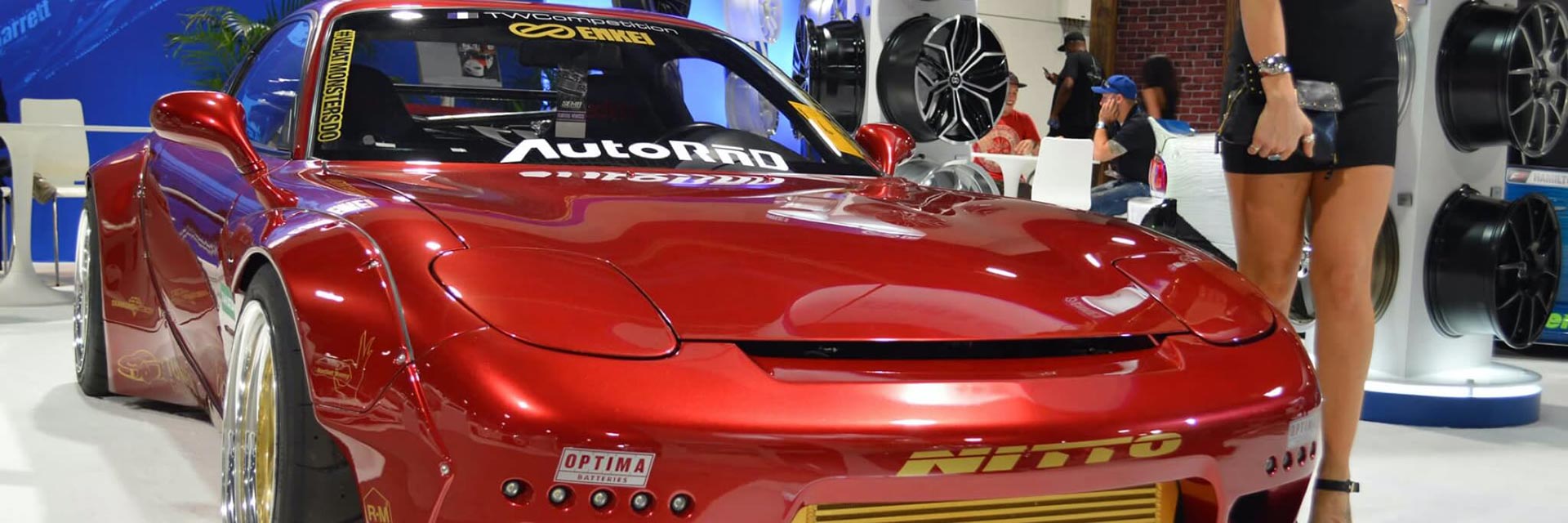
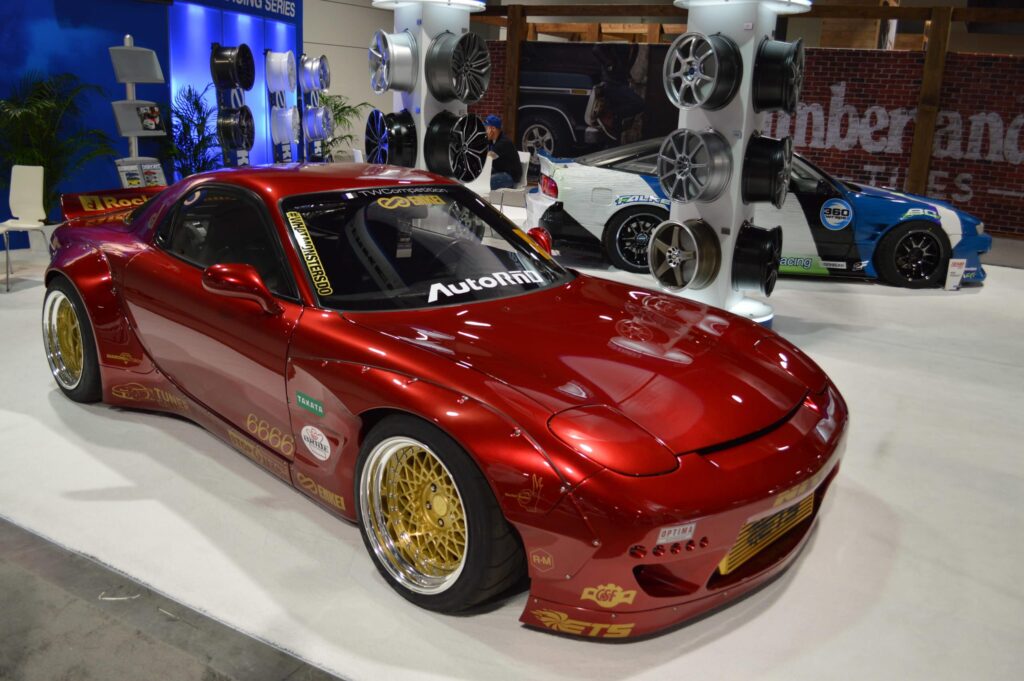
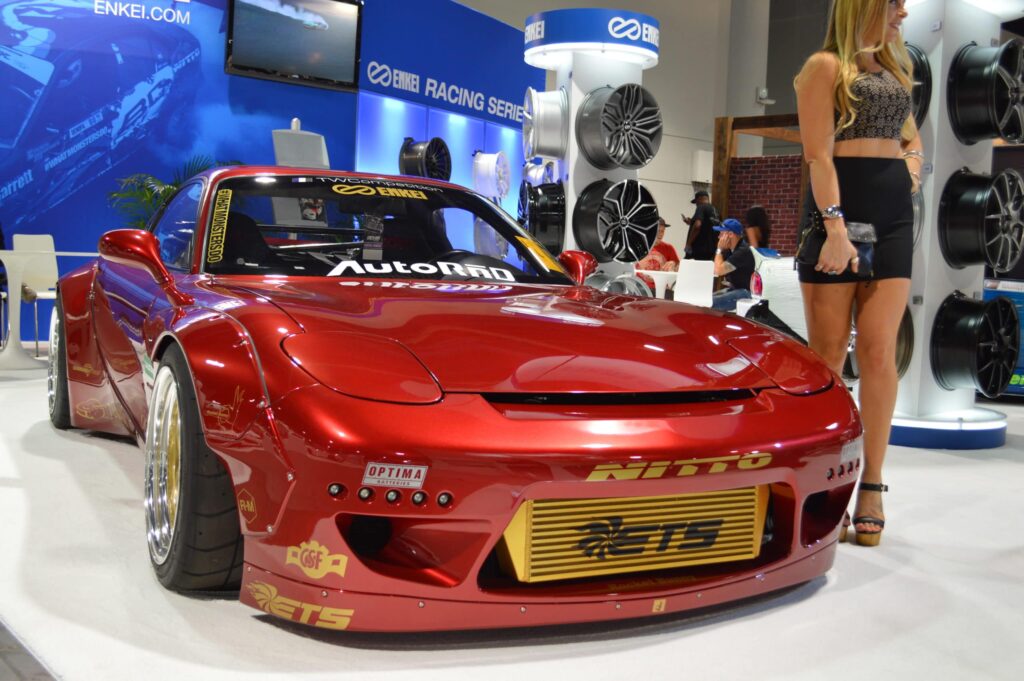

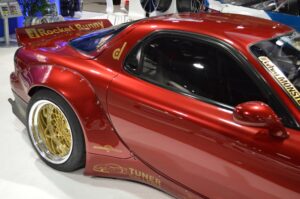

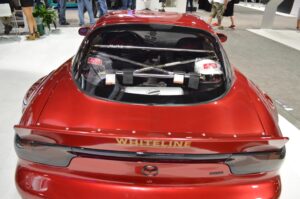


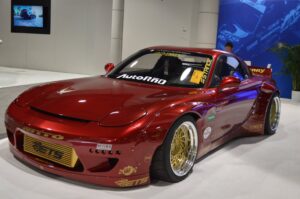

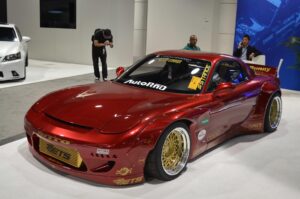



COMMENTS